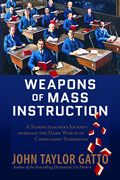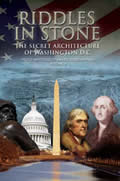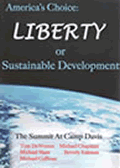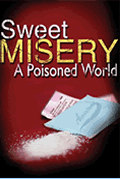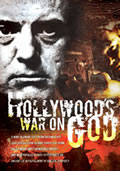PART 1 of 2
By
Servando Gonzalez
April 13, 2014
NewsWithViews.com
Browsing the Internet a few days ago, I found an article with a quite promising title: “The Evil of the National Security State.”[1] Its author is Jacob Hornberger, founder and president of the Future of Freedom Foundation, a libertarian organization.
I have been studying the national security state for many years, and I agree that it is close to the center of evil in this country, so I was excited about what the author had to say. I was not disappointed. The long article begins with a sharp analysis of the so-called national security state and the evils committed under the guise of protecting “national security.”
Until that point I was impressed with the clarity and precision of Honrberger’s criticism of the evils of the national security state. But then, without a transition, he changed the focus of his article and begins a long comparison between evil America under the control of the national security state and Cuba under Castro’s rule.
“Let’s examine those questions. Let’s start by focusing on Cuba.”
According to Hornberger, “One of the most demonstrable examples of the turn that America took toward empire, militarism, and the national-security state has involved Cuba,” Adding, “Consider the economic embargo that the U.S. government has maintained against Cuba for more than half a century.”
After stating that the embargo “has brought untold economic suffering to the Cuban people,” a point on which I fully agree, Hornberger mentions that “the idea was that Castro would be removed from power either by a citizens’ revolt, a military coup, or abdication by Castro himself. Obviously, the plan has never succeeded.”
But Hornberger is dead wrong.
On the contrary, the so-called U.S. embargo on Castro’s Cuba has been a total success. Its secret goal was not to remove Castro from power, but to provide him with an excuse to blame the embargo for the total destruction of the Cuban economy, and it has worked to perfection. Proof of this is that, despite its lack of effectivity, the embargo has been maintained actively year after year for several decades by U.S. presidents of both factions of the Repucratic party.
That is the reason why Castro loves the embargo so much. Former Spanish president José María Aznar mentioned that, during a private conversation he had with Castro in 1998, the Cuban leader himself told him that he “needed the embargo for this and the coming generation.”[2] Even former U.S. Secretary of State Hillary Clinton reached the conclusion that Cuba’s leaders do not want to normalize ties with the U.S. because then they would lose their excuse for the dismal state of the country.[3]
Further proof that Castro needs the embargo is that during the last months of 1998, the ever-faithful liberals in the Clinton administration, tried again to win Fidel’s love by unilaterally taking some measures directed at softening the conditions of the embargo. To everybody’s surprise, Castro’s reaction was outrage and criticism.[4]
In his analysis, Hornberger also mentions the widely-accepted fairy tale of how “The national security establishment engaged in numerous assassination attempts against Cuba’s president, Fidel Castro.” According to Hornberger, “ The CIA repeatedly tried to murder him, in a variety of ways.”
There is a problem, though, with the CIA’s alleged assassination attempts on Castro: they never happened. Stories abound about how dozens of CIA-planned attempts to assassinate Castro ended in failure. In its investigations about the allegations, a Senate Committee chaired by Senator Frank Church allegedly found “concrete evidence” of eight murder plots involving the CIA against the Cuban leader. On the other hand, in August 1975, Castro complained to Senator George McGovern that the actual number was, in fact, twenty-four. More lately, however, like rabbits coming out of the magician’s hat, the number of CIA’s assassination attempts on Castro has been raised to 638. Like the gang that couldn’t shoot straight, the CIA couldn’t kill Castro.
This, however, is pure fiction. Evidence indicates that actually the CIA never tried to assassinate Castro. The problem with the theory of the CIA’s multiple attempts on Castro’s life is that the only sources for that information are the CIA and Castro himself, and both have proven to be very unreliable sources of information. Moreover, both Castro and the CIA are known to be unashamed liars.
If something characterizes the CIA it is its duplicity. There is no doubt whatsoever that CIA officers have consistently lied to the American people. In the case of Castro, even a perfunctory reading of his speeches shows dozens of instances in which he has admitted a posteriori that he has lied. The most known case is when, while still a guerrilla fighter in mountains, he told Herbert Matthews that he was not a communist (he was telling the truth) and then, during a long televised speech on December 2, 1961, soon after he grabbed power in Cuba, he announced to the world that he was a Marxist-Leninist and would remain so until the last day of his life (he was lying!). Author Loree Wilkerson, who wrote probably the best analysis of Castro’s speech, observed that Castro presented the picture of a man desperately trying to modify his past so that it would conform to the present.[5]
An analyst of Castro’s political behavior rightly pointed out that “the Cuban dictator is a liar who confesses the truth—retroactively.[6] The fact explains why, writing about Castro’s unbroken record of deceit, Cuban exile Mario Lazo, called Fidel Castro “the great dissembler.”[7]
But there is more than meets the eye in the CIA’s alleged assassination attempts on Castro.
Referring to the many alleged assassination attempts on Castro, author Ronald Kessler stated, “The ineptitude of the operations was astonishing.”[8] I would add that it was astonishing to the point of being incredible. Actually, some members of the anti-Castro exile community in Florida have mentioned several times that their attempts to assassinate Castro failed because the CIA and the FBI either obstructed their activities or alerted Castro.
Until very recently those allegations were just rumors, because nobody had brought concrete proof of these suspicions. But on May 18, 2010, a true insider gave his support to the allegations. During an interview for Miami’s Channel 23, Félix Rodríguez, an ex-CIA operative who participated in many CIA covert operations, including the capture of Che Guevara in Bolivia, mentioned that the assassination attempts against Castro carried out by the CIA were designed to fail.
Now, why I am so sure that the CIA never tried to assassinate Castro? For the simple reason that, in early 1948, the CIA recruited Fidel Castro and sent him to Bogotá, Colombia, to act as an agent provocateur. In a book he self-published in 1995, Ramón B. Conte, an eye witness who used to do some minor contract work for the CIA, mentions in some detail how the recruitment of Fidel Castro took place in early 1948, during a meeting at the mansion of Mario Lazo.[9] Lazo was an American-educated Cuban lawyer who represented most American interests in Cuba.
Castro’s main job consisted in planting false clues implicating that the Communists were behind the assassination of Colombian leader Jorge Eliécer Gaitán and the instigation of the Bogotazo riots. The riots were used to blow up the threat of communism and launch the Cold War in Latin America.
Since then, Castro has been secretly working for the people who control the CIA.[10] This explains why the CIA, so efficient in assassinating foreign and domestic leaders, has been so inept in its alleged attempts to assassinate its secret agent Alex — the pseudonym adopted by Castro.
The truth is that, far from being an enemy of the promoters of the national security state he claims to hate, Castro is their best secret ally. Nothing proves this better than his invasion of Angola in 1975.
Despite all the disinformation that appeared in the American mainstream media, the invasion of Angola was not a Soviet operation. It was planned and executed by Castro using the resources available in Cuba at the time. Actually the Soviets let him go on with his plans because they were sure the operation was going to be a total failure. Only later, when to their utter surprise they realized that Castro was winning the war, they gave him some limited support.
What was the result of Castro’s victory in Angola fighting “American imperialism”? Did the Soviets profit from it? Not at all.
A few months after Castro’s troops took control of the country, Angola became one of the U.S. largest commercial partners in Africa. Chase Manhattan Bank, Bankers Trust, Citibank, and Morgan Guaranty Trust, gave large loans to Angola. The business of General Motors, General Tire, Caterpillar, Boeing, IBM, NCR, Pfizer, Xerox, and other American corporations, flourished in the country. 95 percent of Angolan oil was exported to Western countries. Castro’s soldiers protected the oil refineries in Cabinda from “saboteurs,” and Castro was paid in dollars for their services. Half of the production of Gulf Oil in Angola ended up in U.S. refineries. The consortium De Beers controlled the diamond mines.
It was not a coincidence that Castro’s invasion of Angola began a little more than a year after Henry Kissinger, a key agent of the people who control the national security state, wrote the infamous National Security Study Memorandum 200. Kept secret for many years, the NSC-200 delineated a genocidal policy of depopulating of much of the African continent, to allow U.S. transnational corporations, not the Africans, exploit the continent’s natural resources — exactly what Castro did in Angola.[11]
So much for Castro’s “anti-imperialist” and “anti-colonialist” policies.
In another part of his article, Hornberger mentions that, “The efforts at replacing Castro with a pro-U.S. ruler began with the CIA’s invasion of Cuba at the Bay of Pigs, an action that took place a few months after John Kennedy assumed office as president.”
Nothing can be farther from the truth.
Before the Bay of Pigs invasion there were more than a dozen anti-Castro organizations in Florida, a widespread anti-Castro clandestine movement was active in the main Cuban cities, and guerrillas had been successfully fighting Castro’s army in the countryside, mainly in the Escambray Mountains in the central part of Cuba. Then, under the pretext of coordinating these groups, the CIA consolidated all anti-Castro organizations in the U.S. into one, and then destroyed it after the invasion. Also, in the months previous to the invasion it stopped supplying the guerrillas with guns and ammo, and left the urban clandestine movement in the dark about the invasion – which Castro used to his advantage to destroy both.
Actually, the secret goal of the Bay of Pigs invasion was not to replace Castro, but to consolidate him in power, and the goal was reached in full. So, contrary to common lore, the Bay of Pigs invasion was a total success.
Finally, Mr. Hornberger tells something right: “Never mind that Castro had no intentions of invading and conquering the United States.”
No, Castro didn’t want to invade or conquer the U.S. What he wanted to do was to destroy America in a nuclear Armageddon, and more than once he was dangerously close to fulfilling his dream.
In 1989 General Rafael del Pino Díaz, the highest-ranking Cuban defector, said that at the time of the Grenada operation in 1983, Castro ordered Cuban MiG 23 pilots to program their computers to attack targets in Florida. Among the selected targets was the Turkey Point nuclear plant, which Castro said had the potential of producing a nuclear disaster larger than Chernobyl.[12] According to Gen. del Pino, Castro’s words were: “I don’t have nuclear bombs, but I can produce a nuclear explosion.”[13]
In another interview, Gen. del Pino claimed that, in 1968, when a group of Cubans were authorized to recover a MiG-17 taken to the U. S. by a defector, Cuban agents secretly made detailed photographs of Homestead Air Force Base in Florida. The base, Gen. del Pino said, had been targeted for an air attack by Cuban planes. The intention of the attack, Castro told the Cuban Air Force officers, would be to provoke the United States into an even stronger action “so the Soviet Union would become involved.”[14]
But that was not the first time Castro tried to destroy the United States.
On October 3, 1962, a few days before the onset of the crisis, Castro sent one of his trusted men to New York on a key mission. The man chosen for the job was a trained terrorist who had just been appointed to a minor post at the Cuban mission to the United Nations. As soon as he arrived in New York, he contacted the rest of his team.
The secret mission of the terrorist team was to accomplish Castro’s orders to blow up a big portion of Manhattan, including the Statue of Liberty, Macy’s department store, several subway stations, the 42 street bus terminal and Grand Central station, as well as several refineries along the New Jersey shore, including the Humble Oil and Refining Company in Linden.[15]
|
But the terrorist’s plan was too ambitious and included too many people, and soon the FBI, which at the time was not under the control of the national security state, got word of it and detained the main conspirators. Had their plan worked out the way it had been conceived, it would undoubtedly have ignited American public opinion and prompted retaliation against Cuba. Had it occurred during the tense days of the missile crisis it may have been taken for a Russian preemptive attack on the United States and may have triggered a spasm-like retaliatory strike upon the Soviet Union, with unpredictable consequences. Fortunately, the plan failed.
Nevertheless, Fidel Castro is a very resourceful man. After his failed attempt to create a provocation that may have started a nuclear confrontation between the superpowers, Castro pulled another ace from his sleeve. For part two click below.
Click here for part -----> 1, 2,
� 2014 Servando Gonzalez - All Rights Reserved
Footnotes:
1.
Jacob Hornberger, “The
Evil of the National Security State,” LewRockwell.com, July
25, 2014. The article originally appeared in several parts at Future
of Freedom, a monthly journal of The Future of Freedom Foundation.
2.
See, “Aznar
exige el fin del embargo a Cuba para favorecer la democracia en la isla,”
Público.es, April 11, 2010
3.
See, “Hillary
Clinton scorns ‘entrenched’ Cuba,” BBBNews,
April 10, 2010.
4.
See Ellis Cose, “Castro no cede un ápice. Fidel no le ve
mucho valor a una iniciativa de EEUU,” Newsweek en Español,
January 20, 1999, p. 17. See also, AFP, “El régimen castrista
rechaza las medidas de EEUU para flexibilizar el embargo,” La
Razón, January 10, 1999.
5.
Loree Wilkerson, Fidel Castro’s Political Programs from Reformism
to Marxist Leninism (Gainesville, Florida: University of Florida
Press, 1965). p. 81.
6.
Mark Falcoff, “How to Think about Cuban-American Relations,”
in Irving Louis Horowitz, ed., Cuban Communism, Fifth Edition
(New Brunswick, N.J.: Transaction Books, 1984), p. 547.
7.
Mario Lazo, Dagger in the Heart (New York: Twin Circle, 1968),
p. 182.
8.
Ronald Kessler, Inside the CIA (New York: Pocket Books, 1992),
p. 53.
9.
See, Ramón B. Conte, Historia oculta de los crímenes
de Fidel Castro (Self-published, n.p., 1995), pp. 15-30.
10.
Castro being recruited by the CIA and his active participation in the
Bogotazo riots is explained and documented in extensive detail in my book
Psychological Warfare and the New World Order: The Secret War Against
the American People (Hayward, California: Spooks Books, 2012).
11.
See, Leuren Moret, “Kissinger, Eugenics and Depopulation,”
Rense.com, November 20, 2013. A copy of the NSC 200 can be downloaded
at nixon
archives.
12.
Ernesto Betancourt, “Is Castro Planning a Preemptive
Strike Against the U.S.?” (Washington, D.C., 1996), p. 4.
13.
Jeanne Kirkpatrick, “Is a Stubborn Castro Testing U.S. Defenses?,”
the Miami Herald, March 31, 1991, p. 3C.
14.
Joseph B. Treaster, “Defecting General Says Cuba Has Plan to Raid
Base in the U.S. if It Is Attacked,” the New York Times,
October 11, 1987.
15.
Andrew Tully, White Tie and Dagger (New York: Pocket Books, 1968),
pp. 74-78. Tully mistakenly believes the plot was a Soviet idea, but it
was Castro’s. The plot is also mentioned in Andres Oppenheimer,
Castro’s Final Hour (New York: Simon and Schuster, 1992).
16.
Seymour Hersh, “Was Castro Out of Control in 1962?”
the Washington Post, October 11, 1987.
17.
Adrián Montoro, “Moscow Was Caught Between Cuba and U.S.,”
the New York Times, November 17, 1987. Rodríguez Menier
in personal communication to the author, December 20, 1994. Menier claims
he heard the story from Gen. José Abrahantes.
18.
Roger Hilsman, To Move a Nation (Garden City, N,Y.: Doubleday,
1967), p. 220.
19.
Carlos Franqui, Family Portrait With Fidel (New York: Vintage,
1984), p. 193.
20.
Nikita S. Khrushchev, Khrushchev Remembers, translated and edited
by Strobe Talbot (Boston: Little, Brown and Company, 1970), p. 499.
21.
See, Document 45:
Prime Minister Fidel Castro’s letter to Premier Khrushchev, October
26, 1962, in Laurence Chang and Peter Kornbluh, eds., The Cuban Missile
Crisis, 1962: A National Security Archive Documents Reader (New York:
The New Press, 1992), p. 189. (Castro’s letter reprinted from the
international edition of Granma).
22.
See, Document
57,: Premier Khrushchev’s letter to Prime Minister Fidel Castro,
October 30, 1962, in Laurence Chang and Peter Kornbluh, eds., The
Cuban Missile Crisis, 1962, p. 243.
23.
Nikita Khrushchev, Khrushchev Remembers: The Glasnost Tapes (Boston:
Little, Brown and Company, 1990), p. 177.
24.
See, Lisa Howard, “Castro’s Overture,” War/Peace
Report, September 1983, p. 4.
25,
Domingo Amuchástegui, “Cuban Intelligence and the October
Crisis,” in James G. Blight and David A. Welch, eds., Intelligence
and the Cuban Missile Crisis (London: Frank Cass, 1998), p. 92.
26,
“Red Missiles in Cuba: Inside Story from Secretary McNamara,”
U.S. News and World Report, November 5, 1962, p. 45.
27,
Neville Brown, Nuclear War (New York: Praeger, 1964), p. 80.
28,
Kurt M Campbell and James B. Steinberg, Difficult Transitions: Foreign
Policy Troubles at the Outset of Presidential Troubles (Washington,
D.C.: The Brookings Institution, 2008), p. 118.
29,
Information surfaced in the mid-1970s confirmed suspicions that Castro,
in cahoots with Bolivian Communist leaders, arranged the betrayal of Ché.
According to Dariel Alarcón Ramírez (“Benigno”),
one of Ché’s trusted men who was part of his guerrilla in
Bolivia, previous to Guevara’s departure for Bolivia, Castro held
a secret meeting with Mario Monje in Havana on December, 1966. Monje,
secretary general of the pro-Soviet Bolivian Communist Party, was instrumental
in Che’s demise by denying the guerrilla any help and leaving them
in total isolation. Benigno is convinced that Monje was following Castro’s
orders when he left Ché in the lurch. See, Dariel Alarcón
Ramírez Memorias de un soldado cubano. Vida y muerte de la
Revolución (Barcelona: Tusquets, 1997).
30,
Both Castro and the CIA collaborated in destabilizing the Allende government
—the CIA by painting him as a radical leftist and Castro by openly
criticizing him for not being radical enough. Moreover, if recently surfaced
information is true, Allende did not commit suicide: his Cuban security
chief, General Patricio de la Guardia, killed him, following Castro’s
direct orders. See my article “Fidel
Castro: asesino de Allende?.”
31,
See, Servando Gonzalez, “Hugo
Chávez: Another Victim of Castro’s High-Tech Political Assassinations?
32,
See, Servando González, The Secret Fidel Castro: Deconstructing
the Symbol (Oakland, California: Spooks Books, 2001), Chapter 3,
note 39, p. 383.
Servando Gonzalez, is a Cuban-born American writer, historian, semiologist and intelligence analyst. He has written books, essays and articles on Latin American history, intelligence, espionage, and semiotics. Servando is the author of Historia herética de la revolución fidelista, Observando, The Secret Fidel Castro: Deconstructing the Symbol, The Nuclear Deception: Nikita Khrushchev and the Cuban Missile Crisis and La madre de todas las conspiraciones: Una novela de ideas subversivas, all available at Amazon.com.
He also hosted the documentaries Treason in America: The Council on Foreign Relations and Partners in Treason: The CFR-CIA-Castro Connection, produced by Xzault Media Group of San Leandro, California, both available at the author's site at http://www.servandogonzalez.org.
His book, Psychological Warfare and the New World Order: The Secret War Against the American People is available at Amazon.com. Or download a .pdf copy of the book you can read on your computer, iPad, Nook, Kindle or any other tablet. His book, OBAMANIA: The New Puppet and His Masters, is available at Amazon.com. Servando's book (in Spanish) La CIA, Fidel Castro, el Bogotazo y el Nuevo Orden Mundial, is available at Amazon.com and other bookstores online.
His most recent book, I Dare Call It treason: The Council on Foreign Relations and the Betrayal of the America, just appeared and is available at Amazon.com and other bookstores online.
Servando's two most recent books in digital versions only are The Swastika and the Nazis: A Study of the Misuse of the Swastika by the Nazis and the first issue of the political satire series OBSERVANDO: American Inventors.
Website: www.servandogonzalez.org
E-Mail: comments@gmail.com



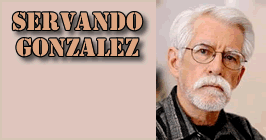


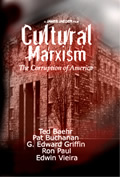
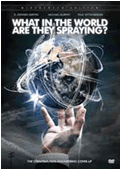
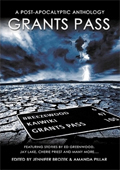




 Share
This Article
Share
This Article